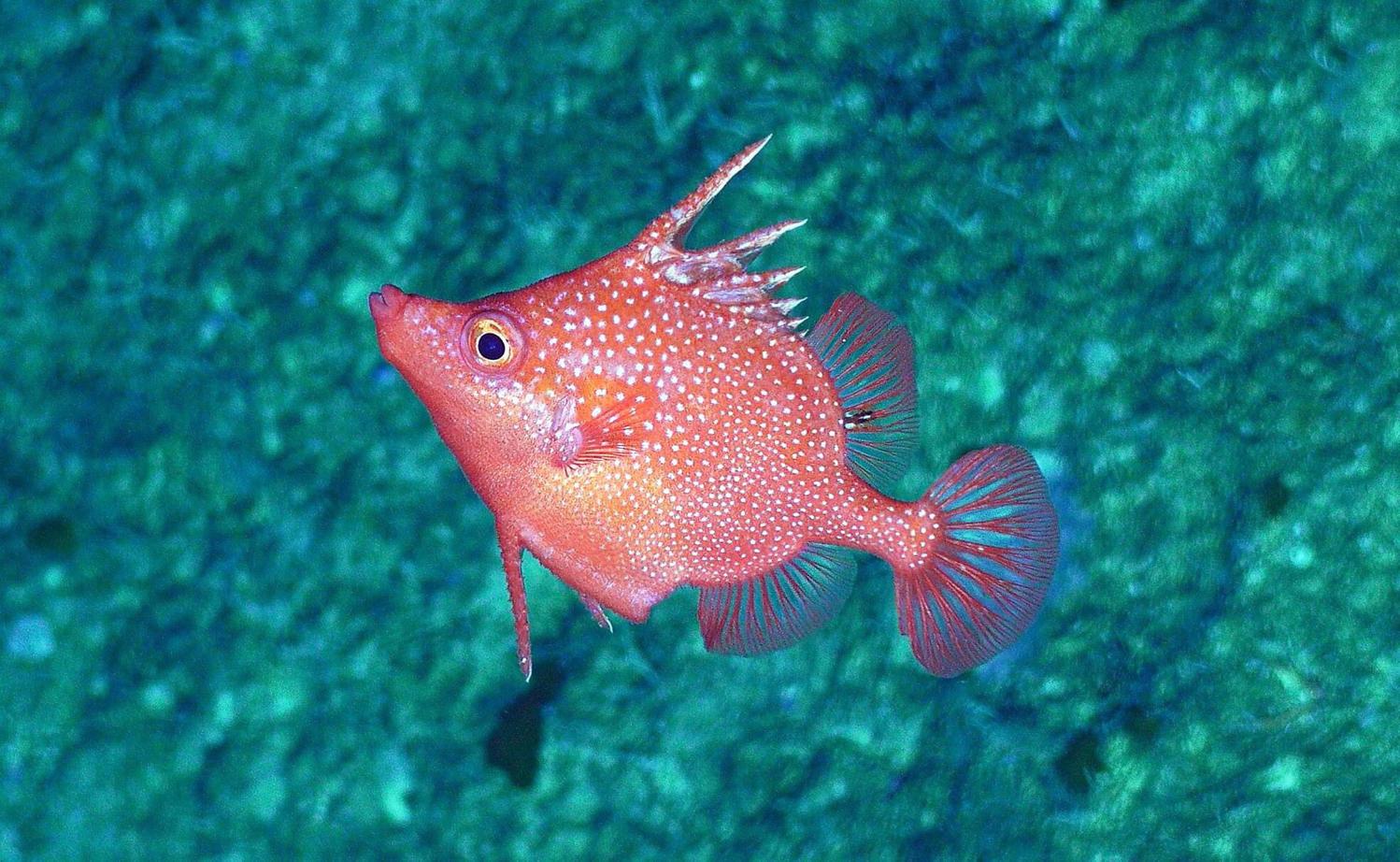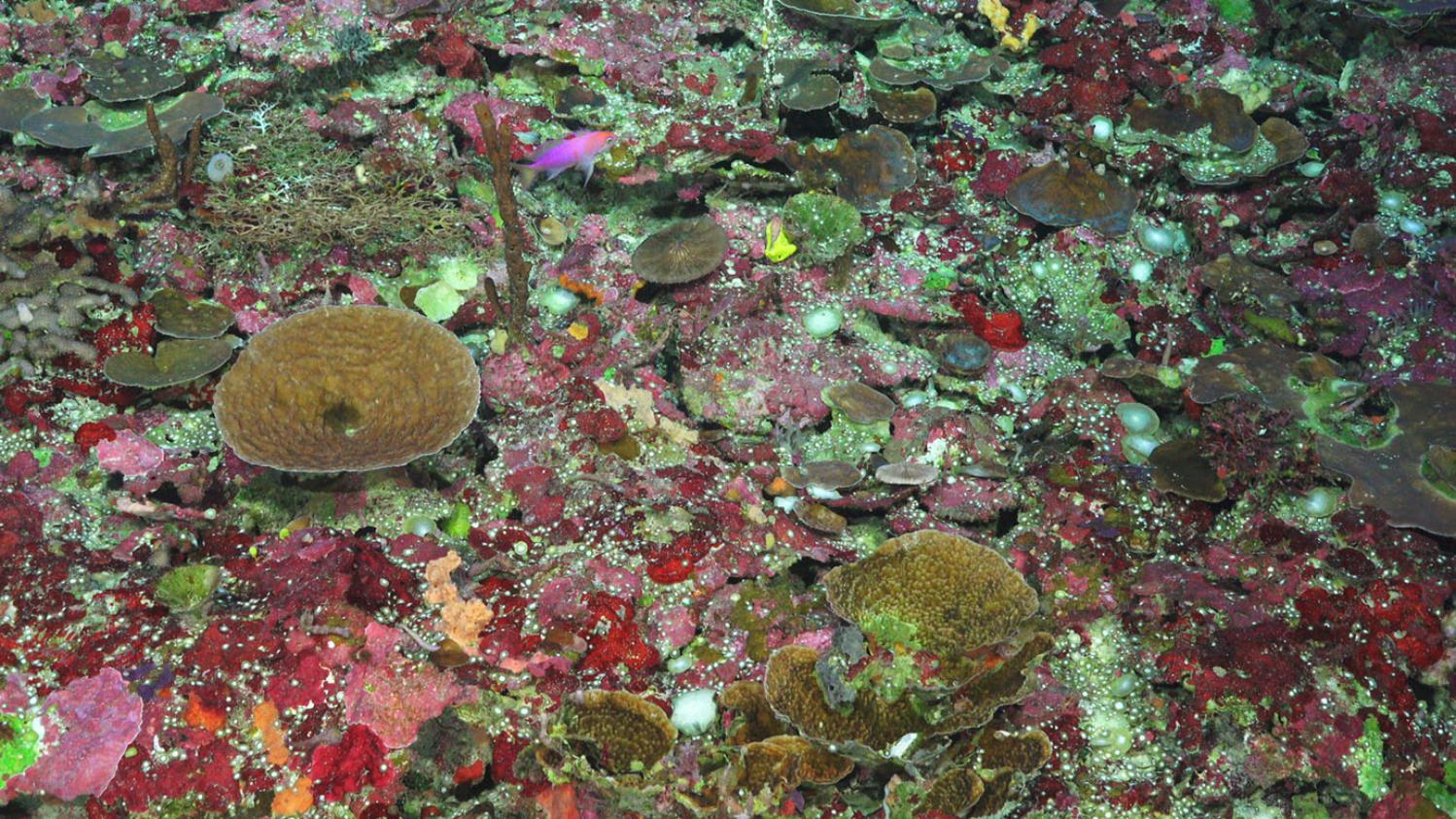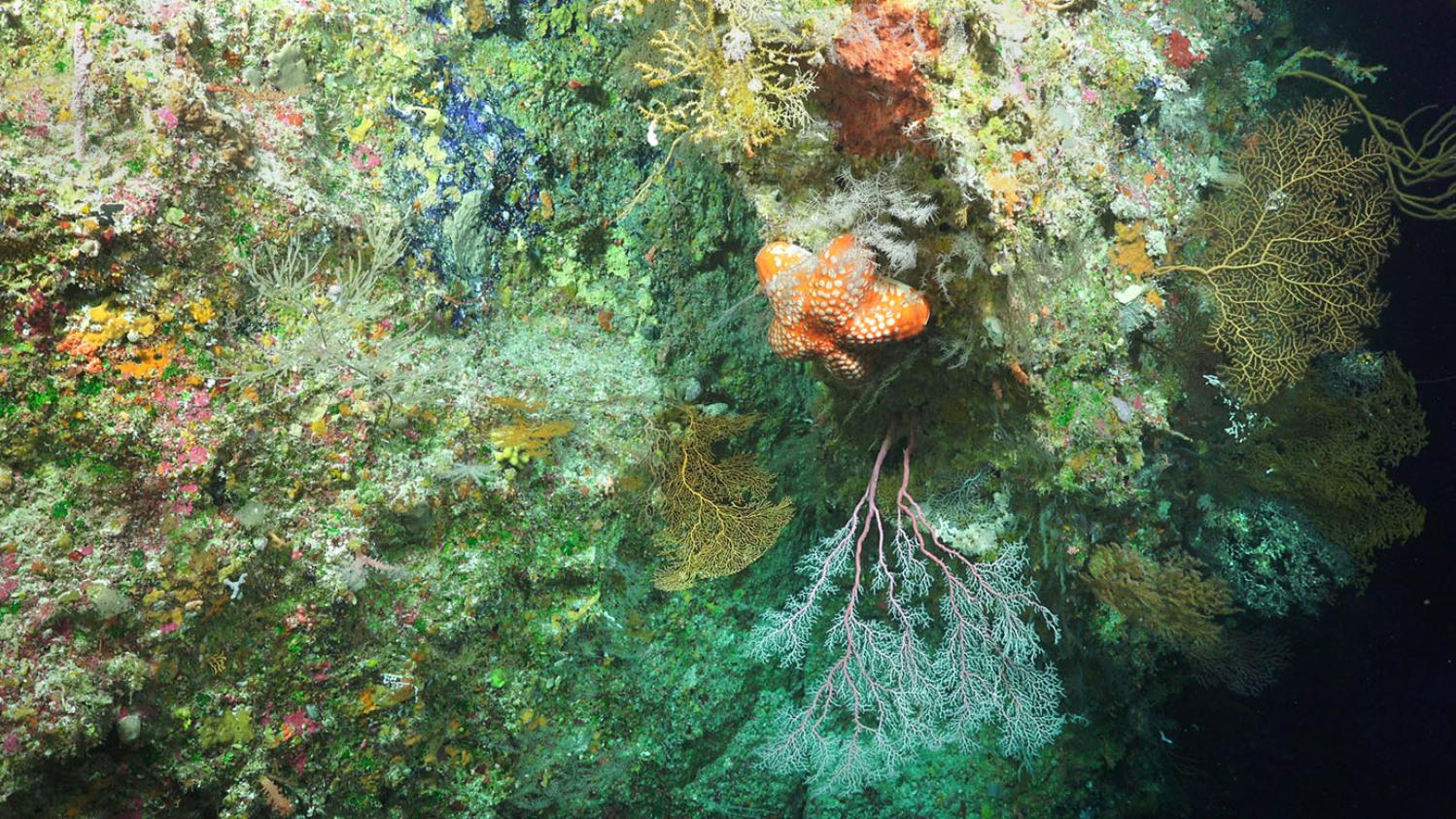July 5 - 18, 2020: Issue 457
First Completely Remote At-Sea Science Expedition In Australia's Coral Sea Marine Park
Discovers New Corals And Possible Species Never Before Seen
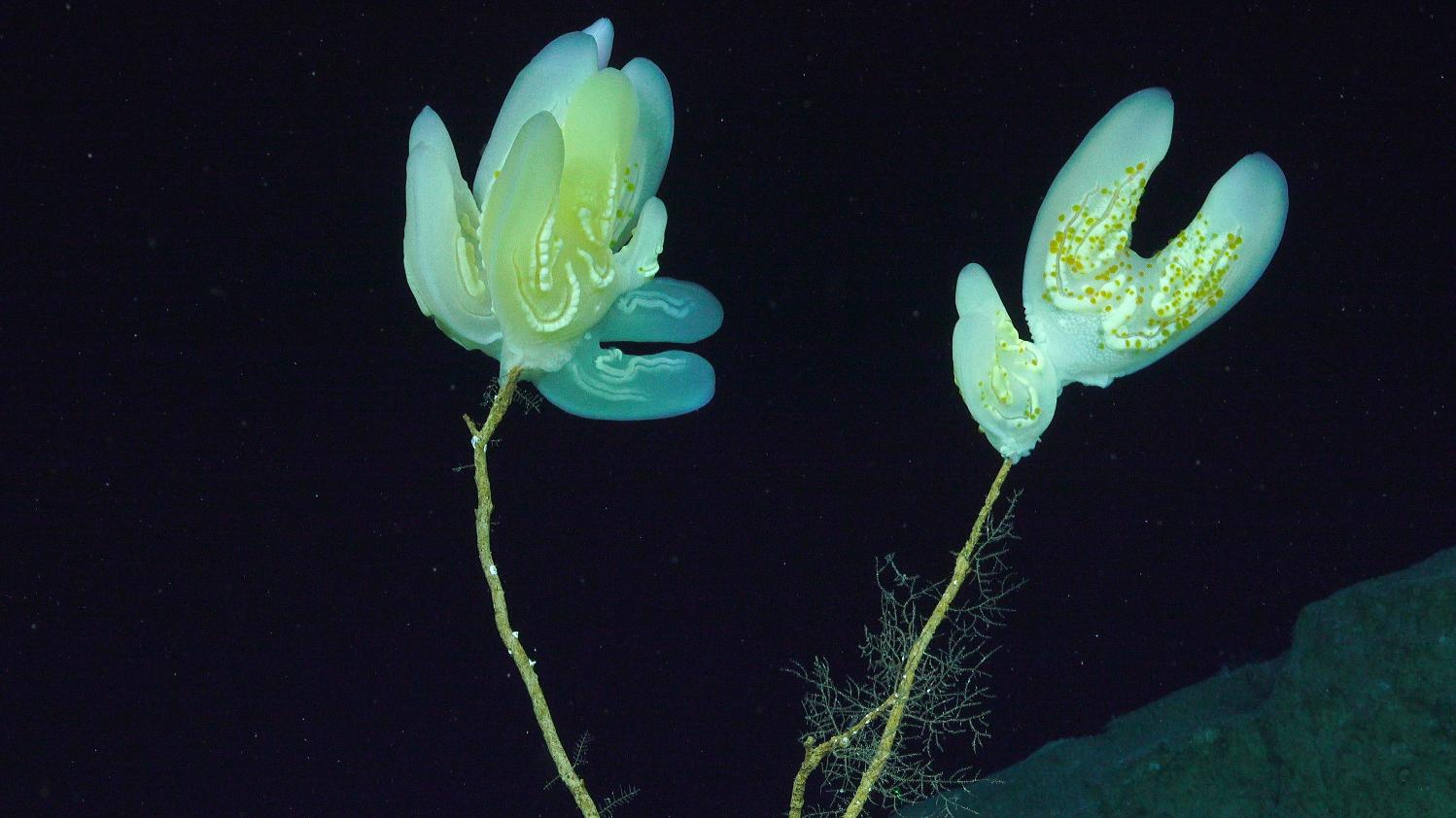
A spectacular group of "Harp" ctenophores (Lyrocteis imperatoris) spotted while exploring Lihou Reef in the Coral Sea Marine Park, at 358 m deep. This is a species of benthic comb jellyfish. Unlike swimming pelagic comb jellies, it attaches itself to rocks and corals. To feed, their comb-like tentacles reach out from the tip of its body to catch floating zooplankton.
Scientists working remotely with Schmidt Ocean Institute, one of the only at-sea science expeditions to continue operating during the global pandemic, have completed a first look at deep waters in the Coral Sea never before seen.
The Australian science team discovered the deepest living hard corals in Eastern Australian waters, sighted fish in regions where they had never been found before, and identified up to 10 new marine species of fish, snails, and sponges.
Schmidt Ocean Institute's research vessel Falkor -- the only year-round philanthropic research vessel in the world -- spent the last 46 days in one of the world's largest protected areas, the Coral Sea Marine Park.
The team of Australian scientists connected remotely to the ship from their homes, collecting high-resolution seafloor maps and video footage of the deep ocean down to 1,600 meters. Led by chief scientist Dr. Robin Beaman of James Cook University, the expedition enabled the team to develop a better understanding of the physical and long-term changes that have occurred on the deep reefs. This marked the first time the region had been viewed, using an underwater robot that streamed real-time 4K video.
The extraordinary mapping effort has illuminated a complex seafloor of 30 large coral atolls and banks, revealing submarine canyons, dune fields, submerged reefs, and landslides. More than 35,500 square kilometers were mapped-an area larger than half of Tasmania, transforming the Queensland Plateau from one of the poorest-mapped to one of the best-mapped frontier areas of Australia's marine estate. The maps created will be available through AusSeabed, a national Australian seabed mapping program, and will also contribute to the Nippon Foundation GEBCO Seabed 2030 Project. Only the shallower parts of these reefs had been mapped previously, and until now no detailed mapping data existed of the deeper areas.
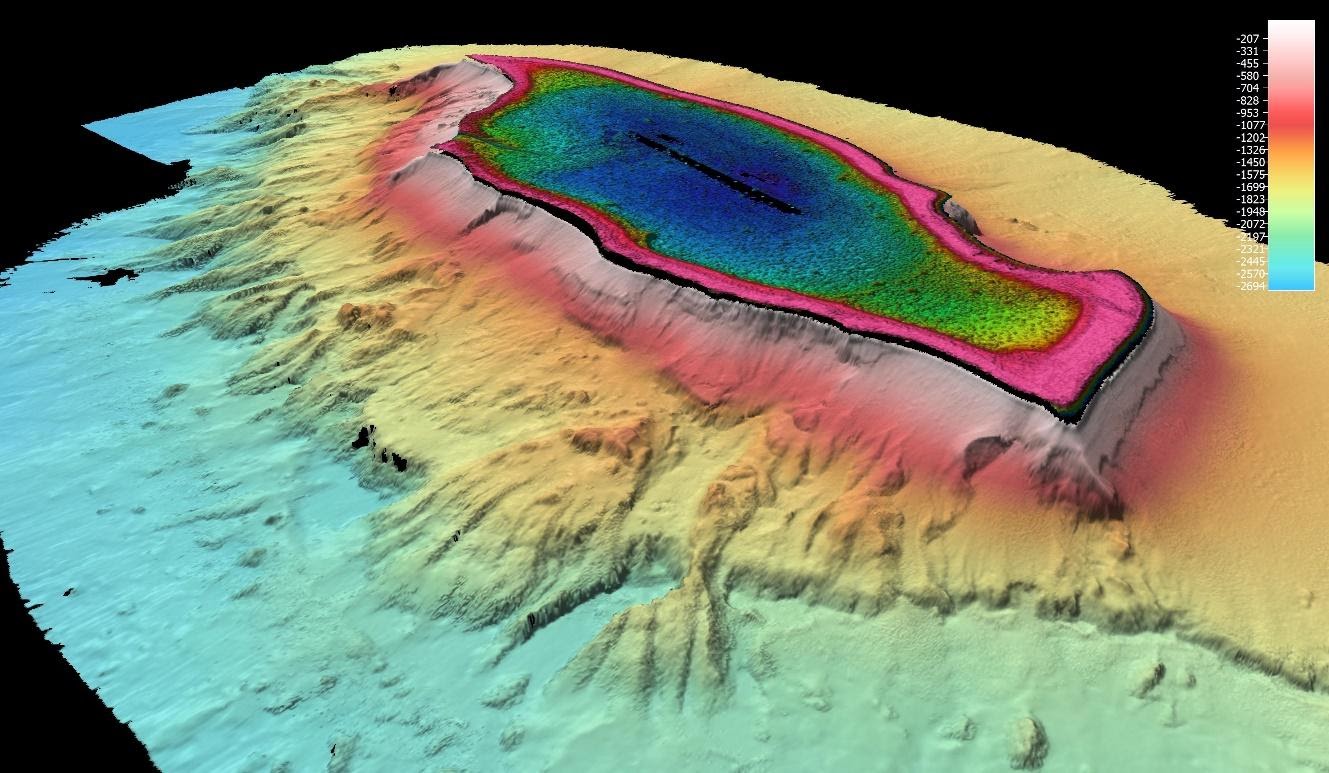
Osprey Reef is an atoll lying on the northwestern side of the Queensland Plateau within the Coral Sea Marine Park, Australia. Osprey Reef is roughly oval in shape, measuring 25 by 12 kilometres, and covers around 195 square kilometres. The newly released Falkor data mapped around the steeper flanks.
"This expedition has provided us with a unique window into both the geological past and the present day conditions, allowing scientists and park managers to be able to see and tell the full story of the interconnected environments," said Dr. Beaman. "This vision is invaluable for science, management, and education."
Over 91 hours of high-resolution video surveys were collected with Falkor's underwater robot, SuBastian, showing no evidence of coral bleaching below 80 meters.
"We know that the shallower coral counterparts are currently undergoing their third mass bleaching event in five years, so it's an invaluable insight for scientists and managers to know how deep that bleaching extends, " said Dr. Jyotika Virmani, executive director of Schmidt Ocean Institute. "It's important to note, however, that the corals discovered are specialized to these deep habitats and are not found in the shallows. This expedition was the first time these species have been recorded in such high abundance in the Coral Sea."
The 14 historic deep sea dives completed with SuBastian have also helped give a much better understanding of the depth and habitat preferences of the Coral Sea deep reef community. All of the data collected has been publicly shared through more than 74 hours of video surveys and highlights available on the Schmidt Ocean Institute YouTube channel and website . The live streamed dives created an online platform, drawing spectators from around the world to witness unique species like deep water sharks and chambered nautiluses -- a distant cousin to squids that uses jet propulsion to move.
"The footage coming from our dives is just astounding, '' Virmani said. "The Falkor 's robust telepresence technology has allowed scientists from all over the world to collaborate on some of these discoveries. The data will greatly advance the characterization of Australia's massive and ecologically important marine estate."
Research Vessel Falkor will return to the Coral Sea Marine Park for an additional month of research at the end of July. You can learn more about the upcoming expedition here
Also available: Deep-Sea Coral Gardens and Graveyards Discovered In The Submarine Canyons Off South Western Australia - March 2020 Issue 440
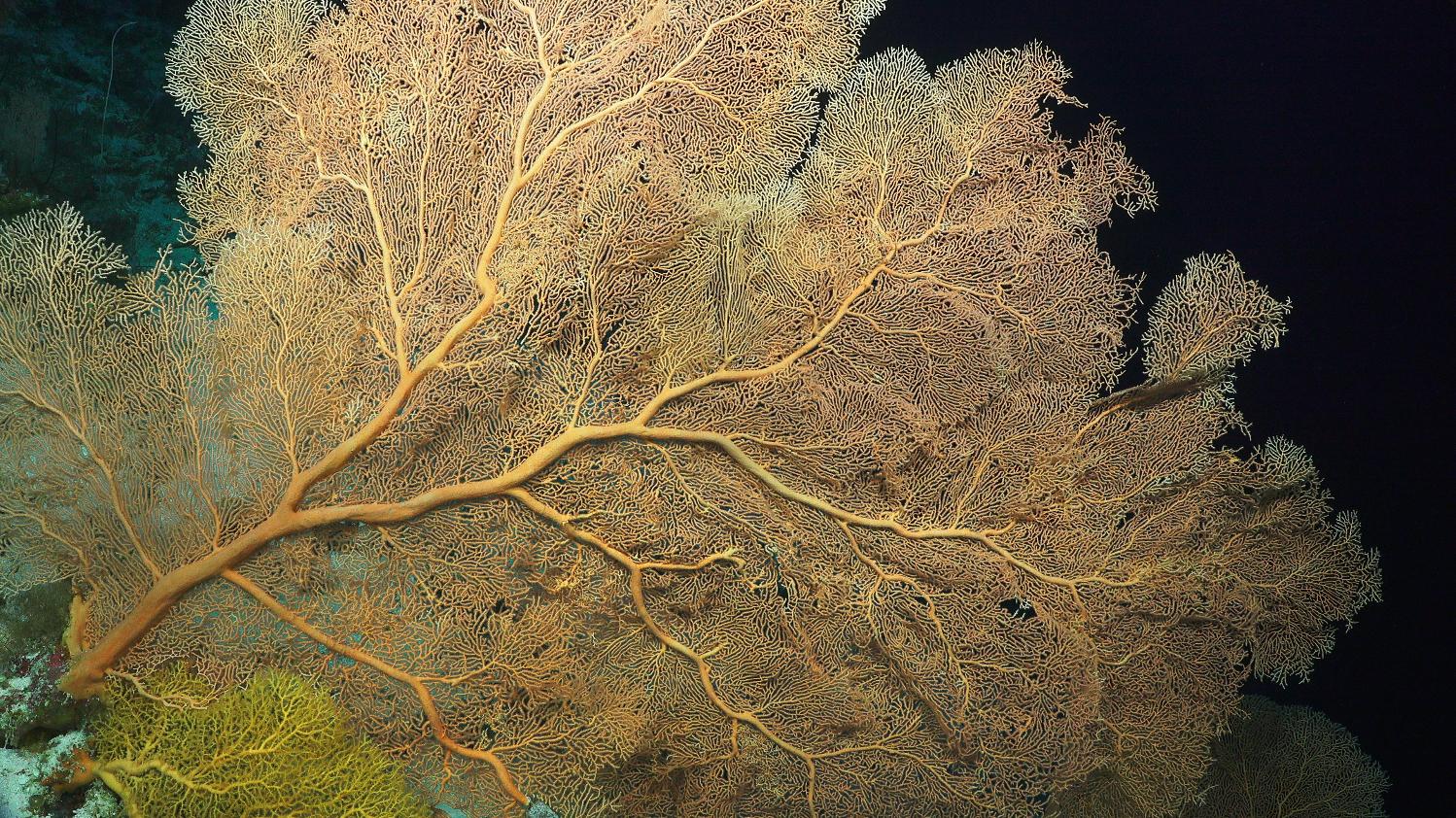
FanCoral- Lower mesophotic coral ecosystems in the Coral Sea included steep walls dominated by azooxanthellate octocorals (fan corals - often called gorgonians).
